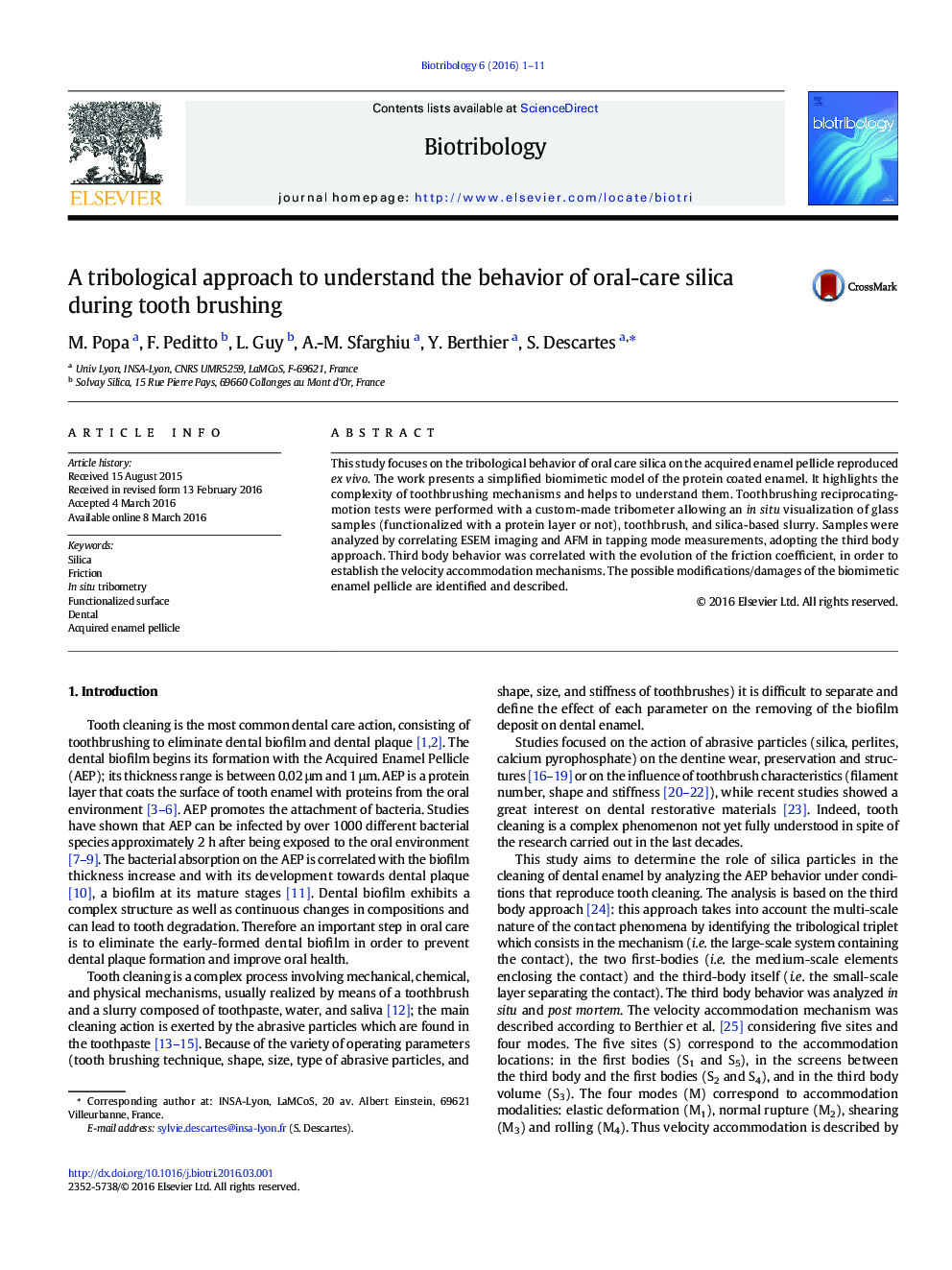| Article ID | Journal | Published Year | Pages | File Type |
|---|---|---|---|---|
| 757151 | Biotribology | 2016 | 11 Pages |
•This study focuses on the tribological aspect of tooth brushing using a simplified model to understand the behavior of oral-care silica.•Glass samples with similar mechanical properties as tooth enamel were functionalized with mucin in order to reproduce the Acquired Enamel Pellicle.•The variety and complexity of phenomena that occur during brushing lead to a smoother mucin layer that covers homogeneously the surface of the glass.•Damage of the functionalized layer highlighted the activation of a third body source flow.
This study focuses on the tribological behavior of oral care silica on the acquired enamel pellicle reproduced ex vivo. The work presents a simplified biomimetic model of the protein coated enamel. It highlights the complexity of toothbrushing mechanisms and helps to understand them. Toothbrushing reciprocating-motion tests were performed with a custom-made tribometer allowing an in situ visualization of glass samples (functionalized with a protein layer or not), toothbrush, and silica-based slurry. Samples were analyzed by correlating ESEM imaging and AFM in tapping mode measurements, adopting the third body approach. Third body behavior was correlated with the evolution of the friction coefficient, in order to establish the velocity accommodation mechanisms. The possible modifications/damages of the biomimetic enamel pellicle are identified and described.
